-
NASA’s Juno mission discovered that Jupiter’s icy moon Europa produces 1,000 tons of oxygen every 24 hours.
-
It’s enough to keep a million people breathing for a day, but it’s much less than previously thought.
-
This new data could reduce the chances that Europa could support life in its vast subsurface ocean.
About 400 million miles away, floating in space, is a water world called Europa, which produces 1,000 tons of oxygen every 24 hours. That’s enough oxygen to keep a million people alive for a day, NASA reported this week.
However, these new estimates, published in the peer-reviewed journal Nature Astronomy, are not intended to determine how many humans could inhabit this moon of Jupiter. They help scientists find out whether or not Europe harbors a life of its own.
“We think Europa is the most likely place to look for life beyond Earth today,” said Curt Niebur, NASA’s chief scientist for outer planet exploration, who was not involved in the study.
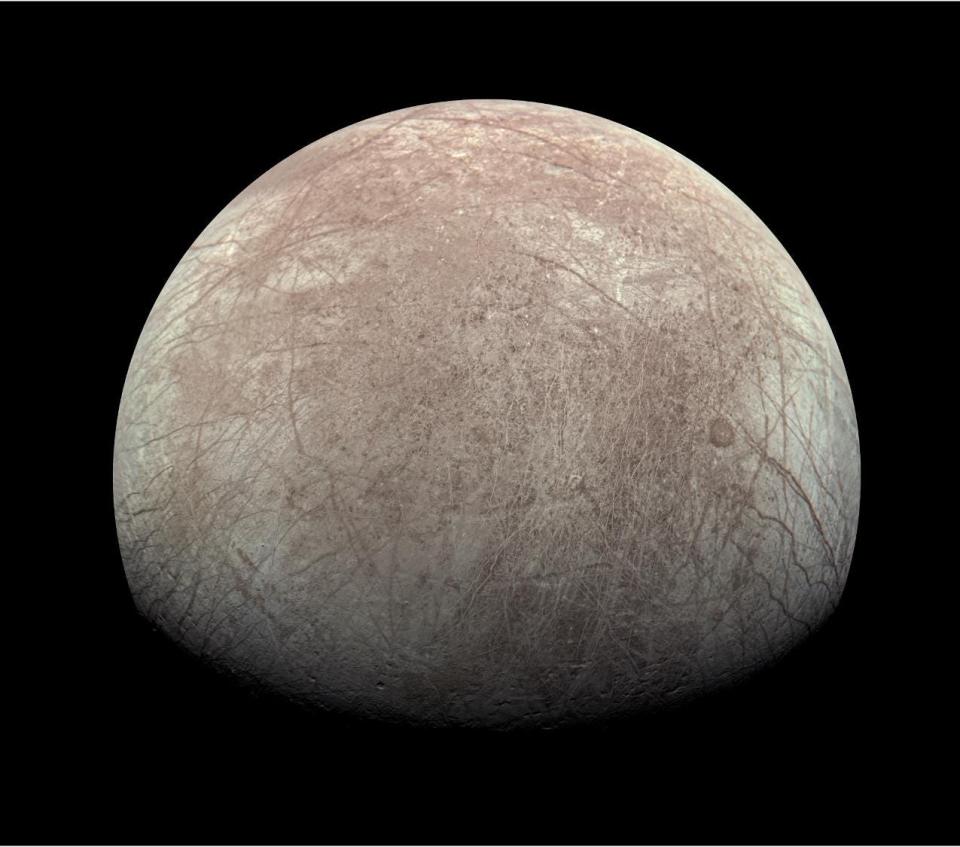

If life forms exist on Europa, they could resemble microbes, or perhaps something more complex, according to NASA. But they would not be visible from the surface, which is a frozen desert.
They would most likely occur in the moon’s vast subsurface ocean, which may contain twice as much water as Earth.
While water is an important ingredient for life as we know it, it is not the only one. There’s a laundry list of other chemicals scientists are looking for, including oxygen.
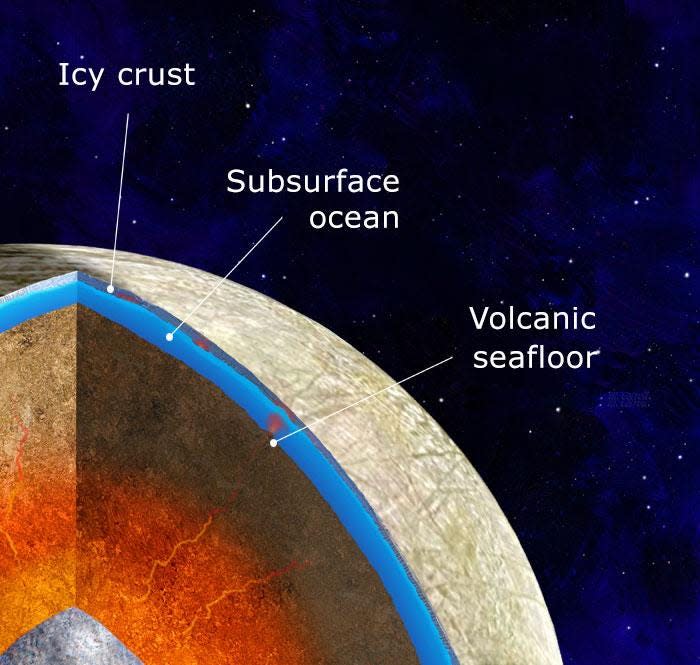

Now NASA’s Juno spacecraft, currently orbiting Jupiter and its moons, has made the most accurate estimate of European oxygen production yet. And that turns out to be a lot less than we thought.
The latest estimate of 1,000 tons of oxygen per 24 hours is more than 86 times less than some previous estimates. And this new data could cast doubt on the habitability of Europe.
How Europe produces oxygen
Oxygen production looks very different in Europe than on Earth. While Earth gets its oxygen from photosynthesis, Europa’s oxygen comes from its parent planet Jupiter.
Jupiter emits powerful radiation that floods Europa with high-energy particles. These particles then interact with frozen water ice (H2O) on the moon’s surface.
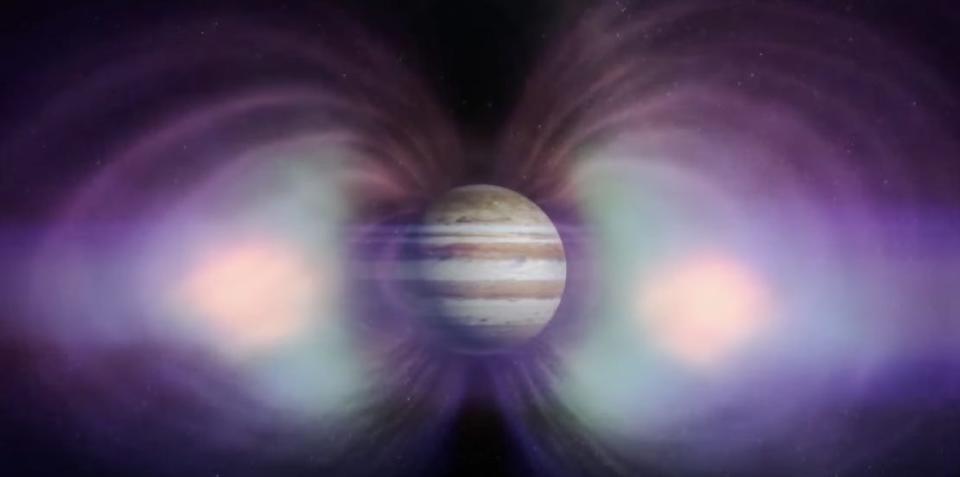

The interaction splits the H2O molecules into hydrogen and oxygen gas. But where that oxygen goes is the big question. Some of it could get stuck in the ice, some of it could escape into space, and some of it could travel down to Europa’s subsurface ocean.
If enough oxygen reaches underground, it would mean that Europe’s ocean contains one of the crucial ingredients for life as we know it. “But that’s a big question mark for us” because the oxygen can end up in so many different places, Niebur said.
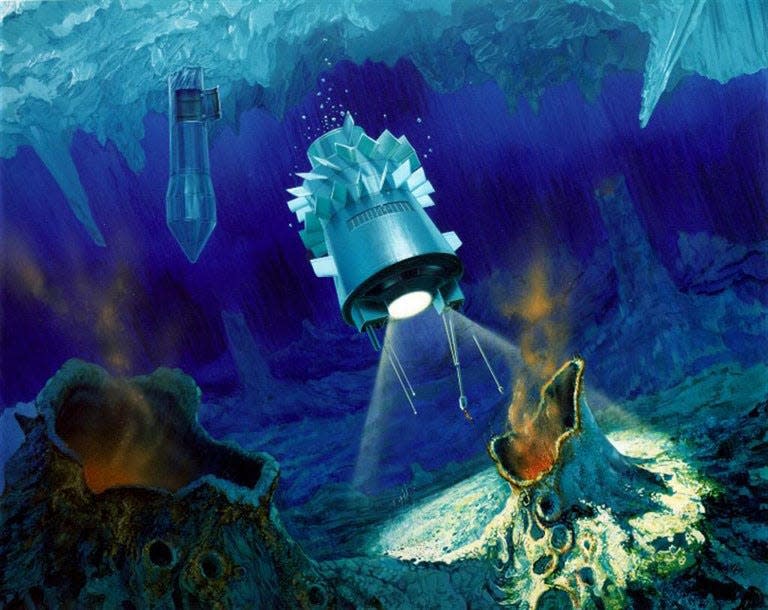

What NASA’s Juno mission has done is shed more light on the total amount of oxygen that Europa’s surface generates. However, it is still not clear how much, if any, is seeping into the subsurface ocean.
Measuring oxygen in Europe
To measure how much oxygen Europa’s surface generates, scientists used the Jovian Auroral Distributions Experiment (JADE) instrument aboard Juno.
JADE is designed to measure charged particles in Jupiter’s auroral regions. But when Juno flew past Europa in September 2022, JADE successfully measured the charged particles ejected from the moon’s atmosphere for the first time ever.
Using the JADE data, scientists estimate the total amount of hydrogen gas (not oxygen) in Europa’s thin atmosphere. Because there is one oxygen atom for every two hydrogen atoms in a water molecule, scientists can use the hydrogen gas data to then calculate the amount of oxygen generated on the surface.
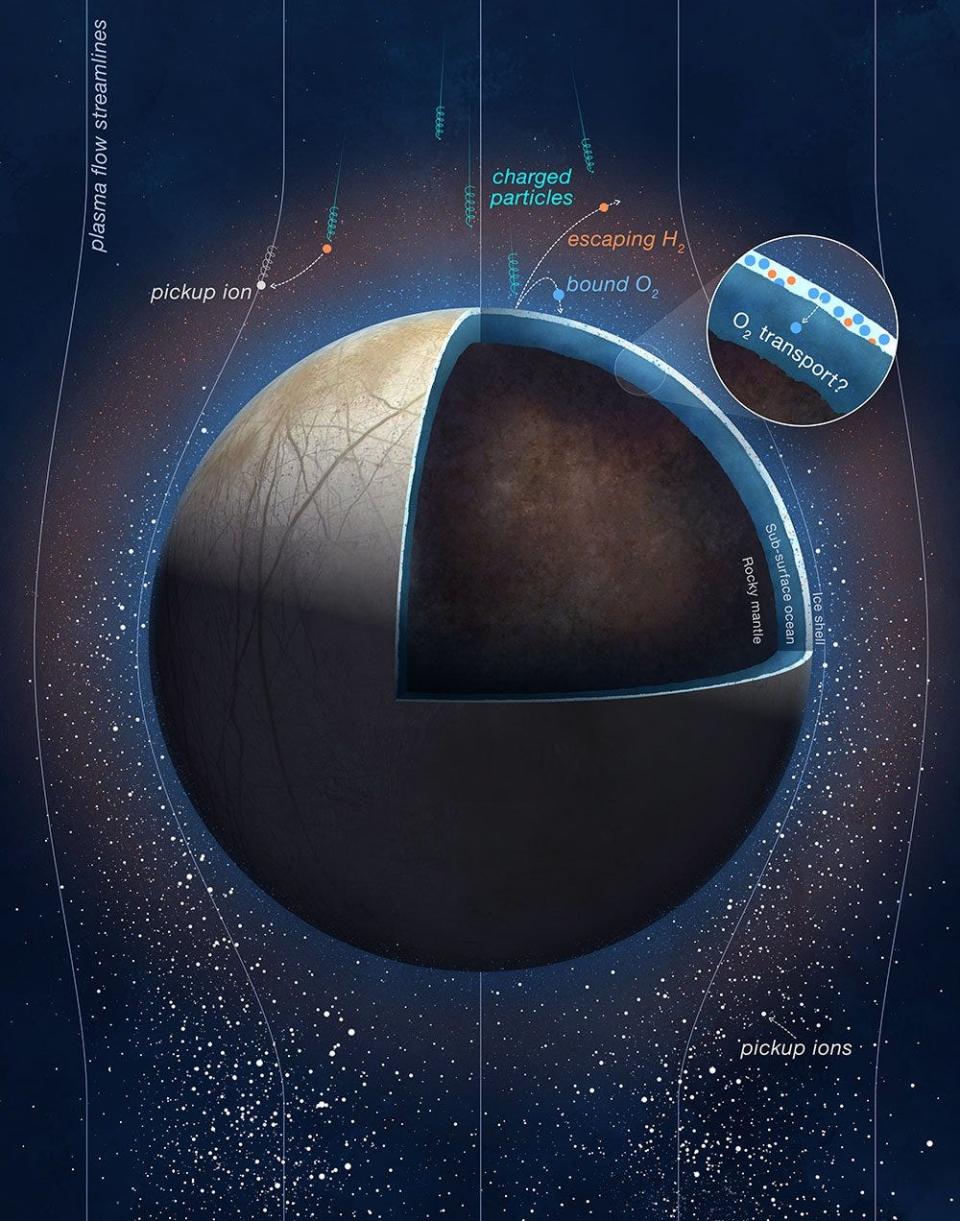

“This has really refined and narrowed our understanding of how much oxygen is being made at the surface,” said lead study author Jamey Szalay, a space physics researcher at Princeton University.
“But we don’t know how much of it leaves the surface and how much of it ends up in the ocean,” Szalay added. NASA’s next Europa mission, Clipper, could bring us closer to the answer to that question.
A constant search for the possibility of life
NASA’s Europa Clipper mission is expected to launch in October 2024. The main goal is to determine whether Europe is habitable or not.
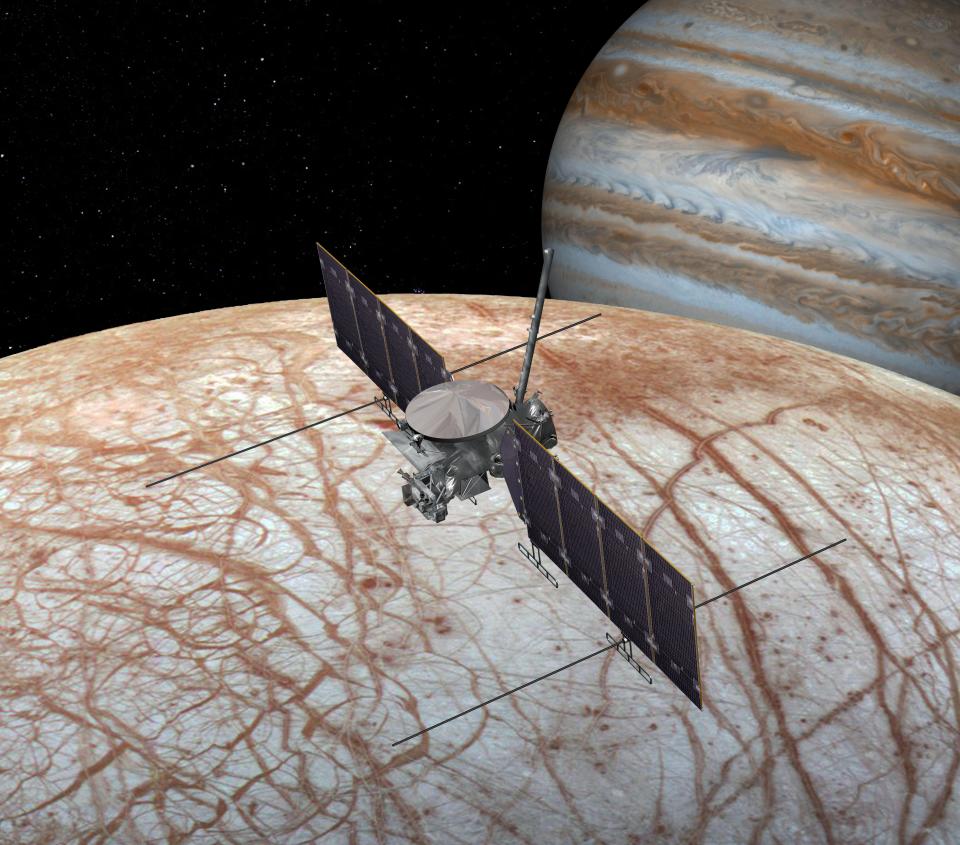

Clipper will be equipped with instruments that will help reveal the inner structure of Europe, such as the underground radar. With this tool, NASA scientists will look tens of miles beneath the crust to identify features that could help determine whether oxygen is reaching the subsurface ocean, Niebur told BI.
“Clipper is an incredibly exciting mission, and it has important scientific objectives that will likely revolutionize our understanding of the ice shell, the subsurface ocean and how they interact,” Szalay said.
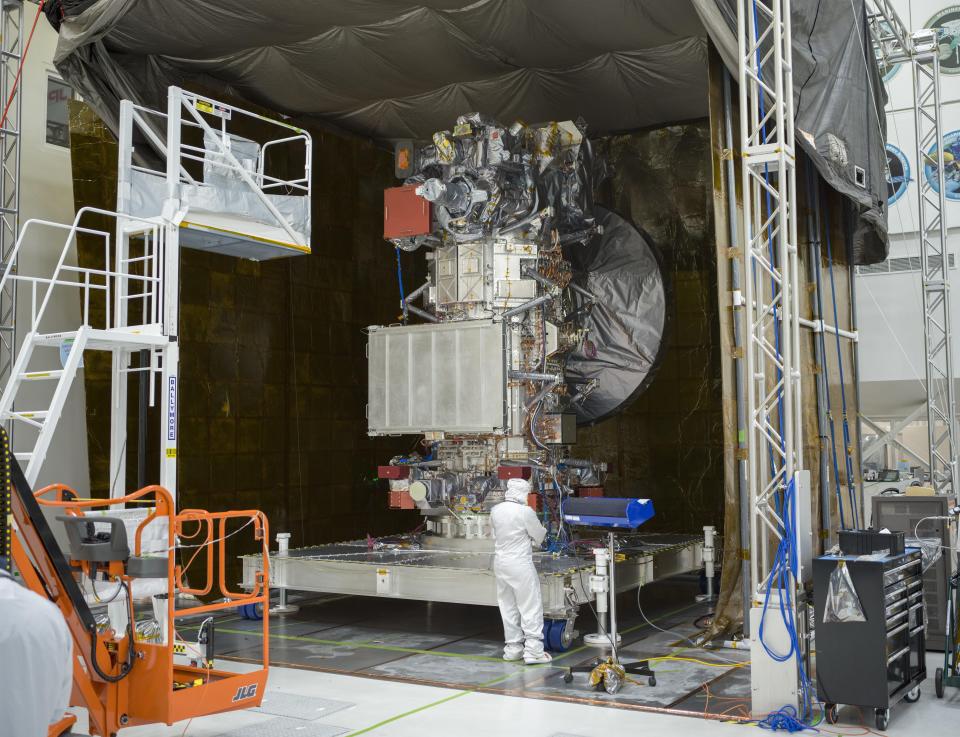

While finding out whether Europa’s subsurface ocean contains oxygen or not would improve our understanding of the moon’s habitability, it won’t automatically confirm whether life exists or could exist on Europa.
“The amount of oxygen available on Europa is not a binary switch that you flip to decide whether or not life can be present,” Niebur explains.
He pointed out that life existed on Earth for about 1.5 billion years without oxygen. If it could happen here, it could happen on this distant moon.
As for the Juno mission, Szalay will continue processing the data collected during this Europa flyby.
“Over the next few years we will dig through this and learn everything we can,” he said.
Read the original article on Business Insider